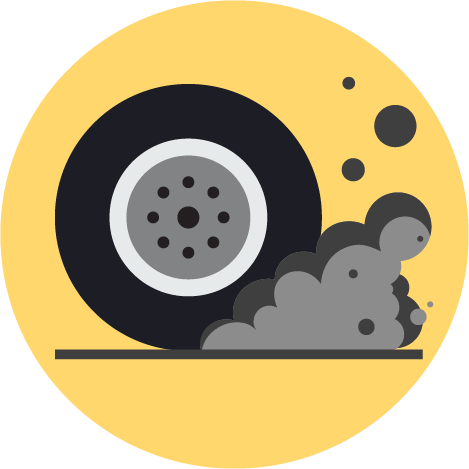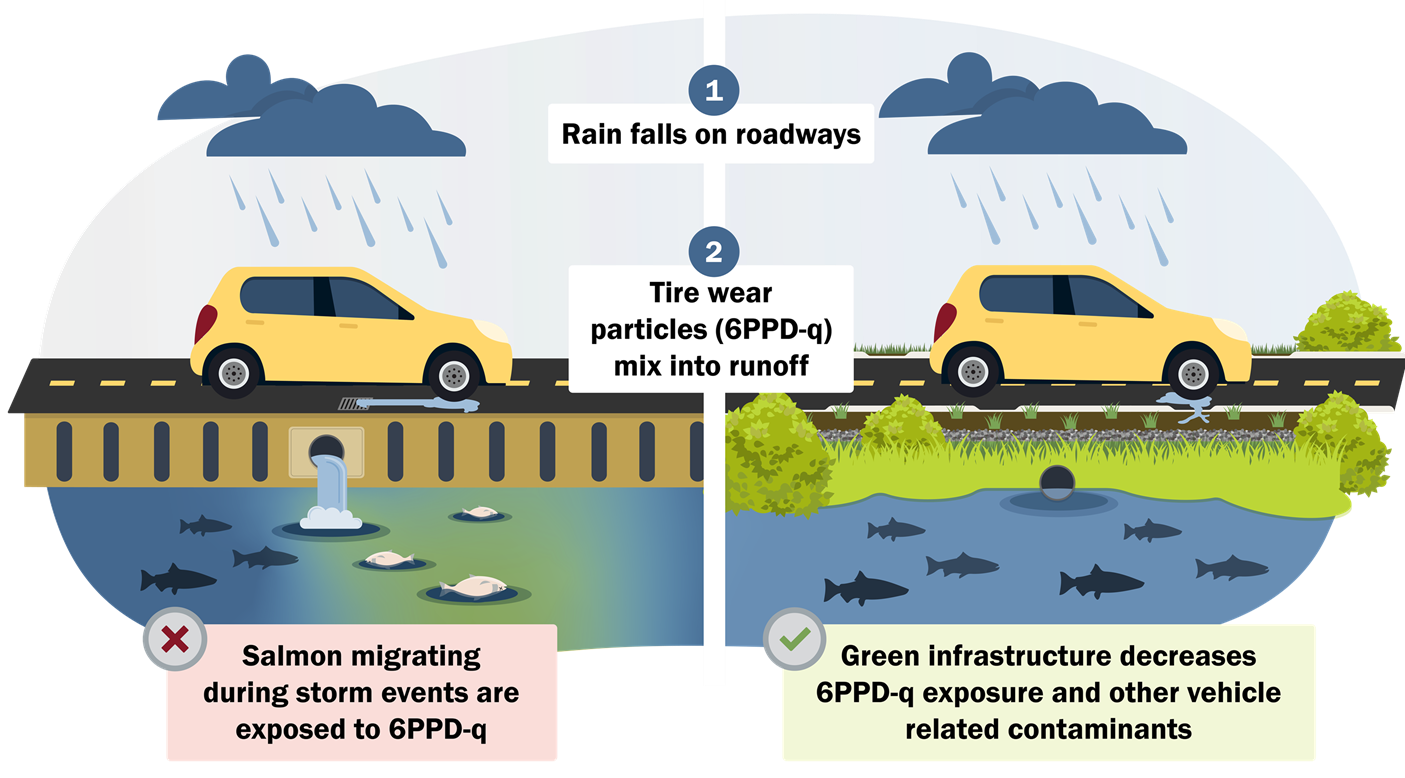Tire anti-degradant (6PPD) and 6PPD-quinone
We work with tribal and local governments, state and federal agencies, academic institutions, and industrial organizations to reduce the pollution and sources of 6PPD-quinone released from tires in Washington.
What are the impacts of 6PPD-q?
Driving causes tires to release dust and small particles because of friction on the road. These particles contain 6PPD-q, which then washes into stormwater, which can then spread to rivers, streams, and the Puget Sound. Since 6PPD-q was only recently discovered, we are still learning about this chemical and its impacts on wildlife.
Learn more about the connection between tires, fish, and us.
6PPD-q can end up in freshwater or marine environments harming wildlife. Green infrastructure can help remove toxic chemicals like 6PPD-q from stormwater.
Taking action to protect salmon
We’re focusing on three key efforts to effectively reduce the threat of 6PPD-q to salmon:
- Understand the problem: Develop scientific methods to measure 6PPD-q in the environment and identify affected areas.
- Reduce stormwater pollution: Identify stormwater management practices to treat 6PPD-q and tire debris before it reaches streams; update guidance for local governments to use; and, increase funding for stormwater infrastructure.
- Reduce sources of 6PPD: Research alternate chemical preservatives that could replace 6PPD in tires, and evaluate if those chemicals are actually safer.
Contact information
6PPD team
6PPD@ecy.wa.gov
360-688-4993



